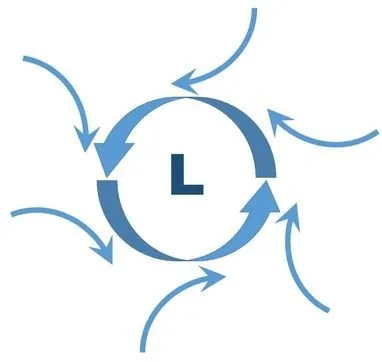Whether the water emptying from a basin flows in a hemisphere-dependent direction has been the topic of much interest since talk of the Coriolis effect, often credited for the phenomenon, breached popular culture.
So what's the verdict?

The Coriolis Effect
A spinning object has angular momentum, the rotational analogue of linear momentum - for a recap of angular motion, click here. An object's angular momentum increases with distance from the axis of rotation. This should be intuitive; picture a two-dimensional spinning disk: during one full rotation, the rim travels a distance equal to the disk's circumference while a point midway between the rim and centre maps out half this distance in the same time. Clearly the rim must be moving more quickly during the rotation (i.e. angular momentum is greatest at the outer edge).
If we apply the same logic to a spinning sphere in three dimensions, we find that equatorial points, at which the distance from the sphere's axis of rotation is a maximum, must be moving quickest. Indeed, Earth's equator spins at roughly 1,000 mph (according to NASA) while rotation approaching either pole (analogous to the 2D disk's centre) is comparatively slow.
If you were to stand on the equator and fire a bullet north at a very distant target, it would stray right.
Why?
The bullet leaves the gun rotating at the same speed as the equator (with maximum angular momentum) but the ground north of the equator - and by extension, the target - is rotating more slowly and 'lags' behind the bullet. This is the Coriolis effect in action.

When is a straight line not a straight line? On a rotating surface!
Hurricanes rotate as a direct consequence of the Coriolis effect.
The eye of a storm has a low pressure, in contrast with the high pressure outer arms. These outer regions rush in towards the eye (along a pressure gradient), but do so with different angular momenta. The result is a net rotation in the storm - the outer arms 'miss' the eye. In the northern hemisphere, the high pressure regions are deviated right of the eye - for the same reason that our north-bound bullet fell right of the target - and the hurricane rotates counter-clockwise.
Conversely - but by the same mechanism - hurricanes spin clockwise south of the equator.

The mechanism of storm rotation north of the equator.
Weren't We Talking About Baths...?
Yes. One side of a body of water will be further from the equator and hence rotate slower than the other; this means that as the water rushes inwards to fill the gap left above the drain, just like a scaled-down version of a hurricane, a Coriolis-type deviation should occur.
In fact, this is completely correct physics - in principle. Water does rotate clockwise/counter-clockwise down a drain in the southern/northern hemisphere, under ideal conditions. Bathwater in the real world, however, possess some degree of vorticity: localised high-spin regions, usually caused by a disturbance (eg. a hand removing a plughole).
The direction and magnitude of vorticity is dependent on the disturbance's orientation, tub shape (irregularities in shape can cause non-laminar, or 'non-smooth', flow) and a number of other hard-to-control factors. More importantly, the angular momentum added by such sources is far greater than from the Coriolis effect, since the effect of momenta difference of water localities a few centimetres apart is tiny - in storm systems we are dealing with separations of thousands of miles!
I have even heard it suggested that this half-truth has become a great marketing ploy of manufacturers either side of the equator, who deliberately produce receptacles which drain in accordance with the Coriolis effect. A few tests at home (and an ounce or two of common sense...) should confirm that water drains randomly in either direction, seemingly irrespective of latitude, and that there is no great conspiracy after all.

That's not to say they're not putting something in the water though...
If you enjoyed this article and would like more, follow the everyday science blog for your daily dose of science.
References
Coriolis Effect: IDTIMWYTIM, Hank Green's SciShow
The Coriolis Effect, NOVA PBS Official
The Truth About Toilet Swirl, Veritasium
www.nationalgeographic.org
www.ces.fau.edu
CollegeHumor's Exclusive "Weird Al" Yankovic Music Video: FOIL (Parody of "Royals" by Lorde)
www.gettyimages.co.uk